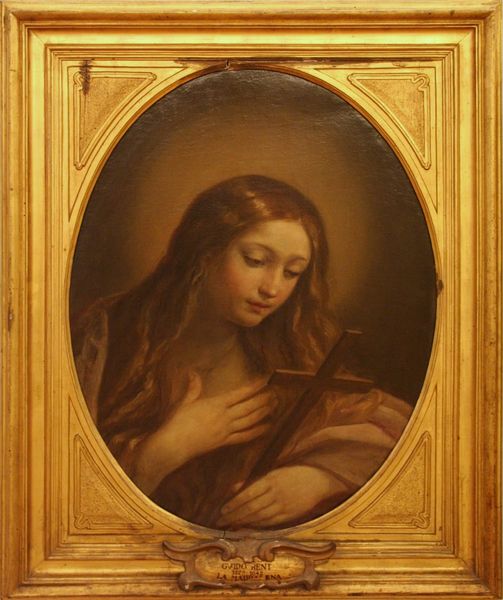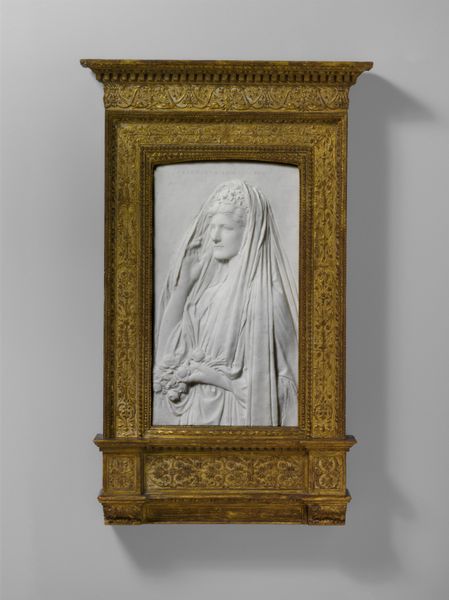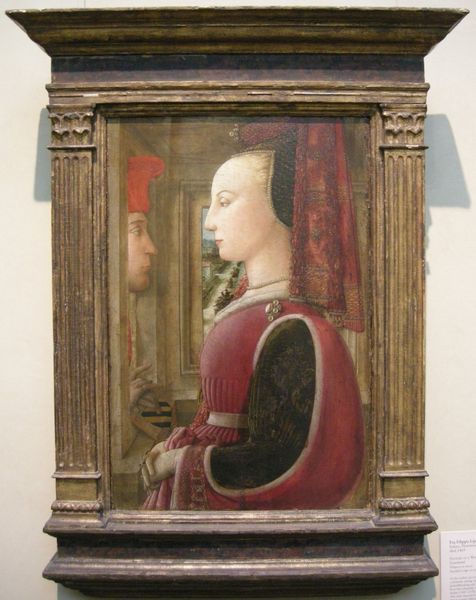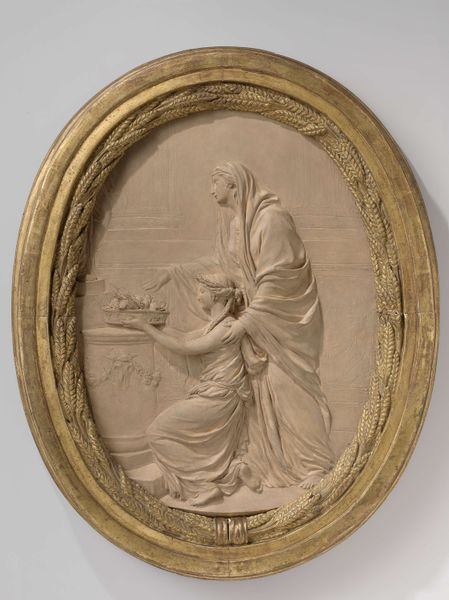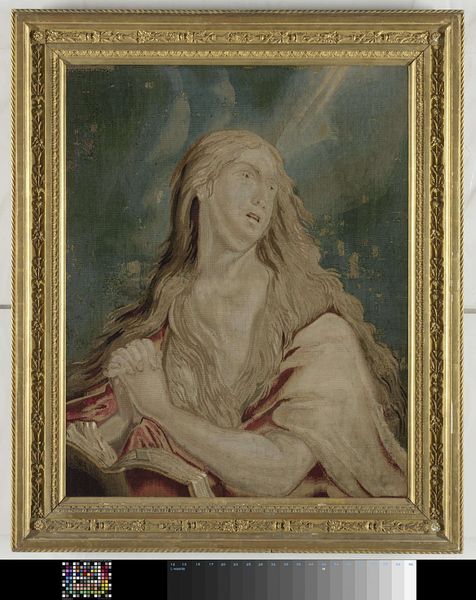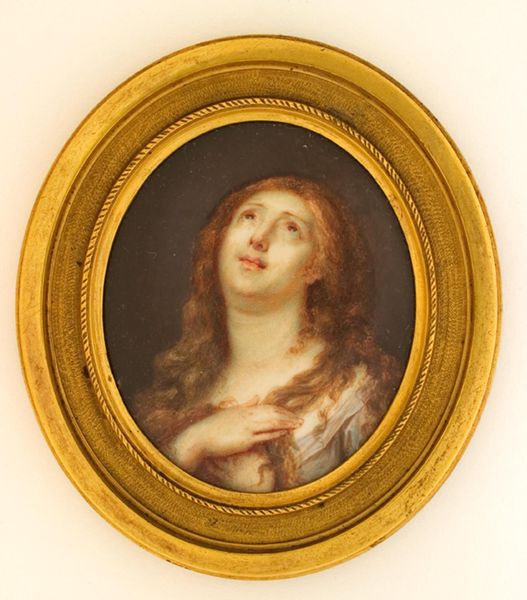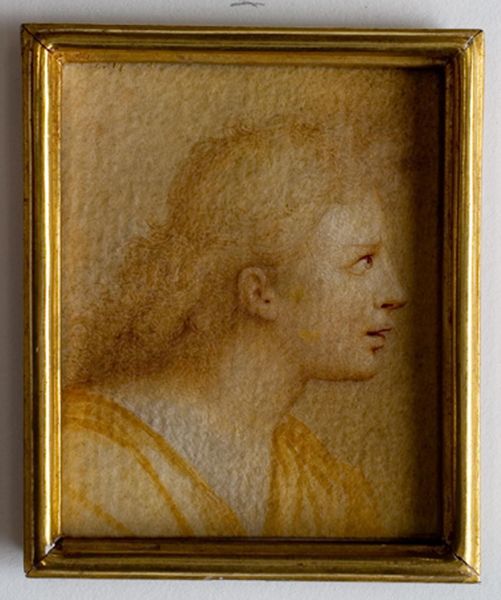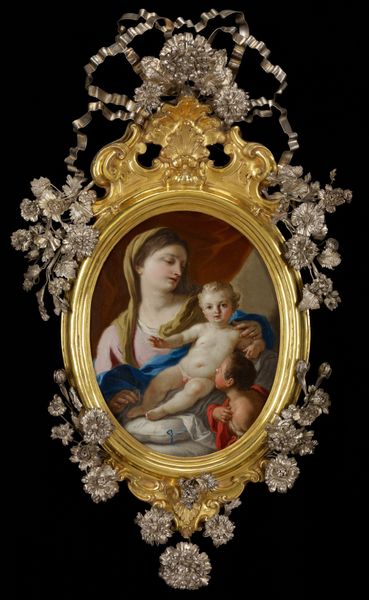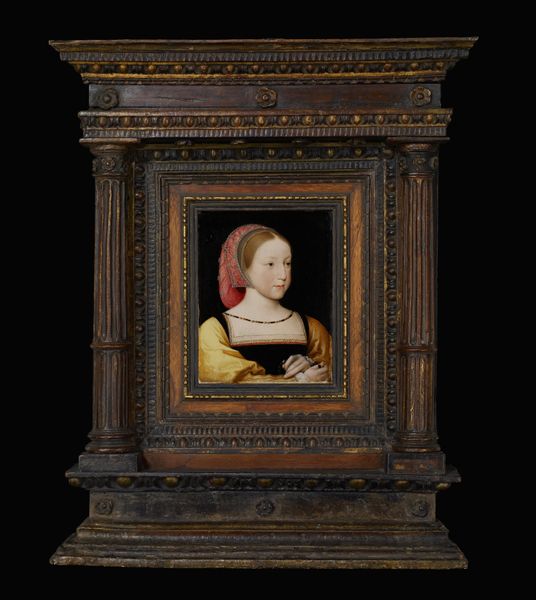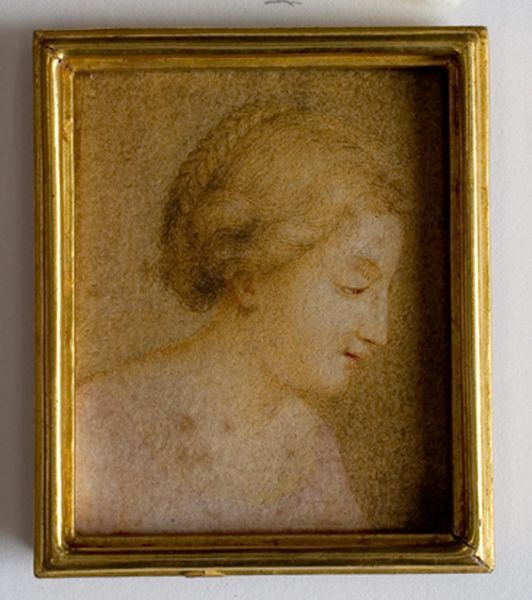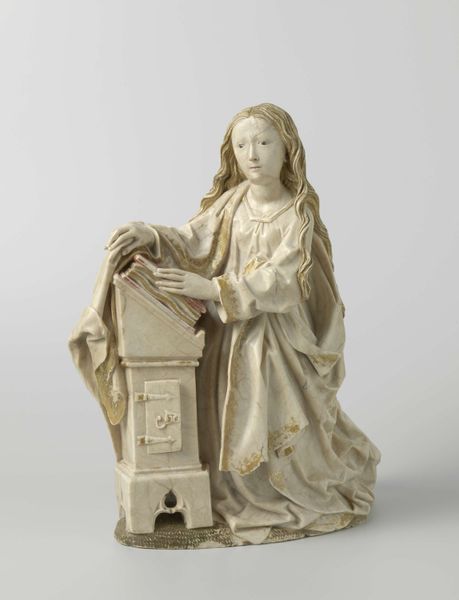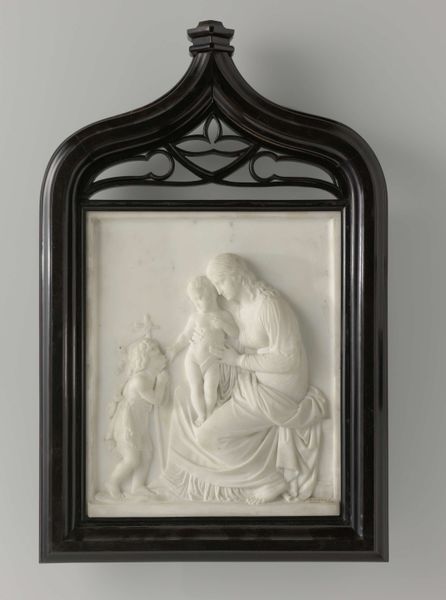
carving, oil-paint, gold, sculpture
#
carving
#
baroque
#
oil-paint
#
sculpture
#
gold
#
oil painting
#
sculpture
Copyright: Public domain
Curator: Here we have "Portrait Funéraire d'Henriette Sélincart," an artwork completed around 1680 by Charles Le Brun. This work incorporates a number of mediums: oil paint, carving, and gilding—all characteristic of the Baroque era. Editor: Well, my first thought is: that's intense! The oval portrait nestled in that golden, draped frame feels very theatrical, almost like a stage. I can't help but feel a bit sad, given the funéraire title. She looks peaceful, though, doesn't she? Curator: Yes, the Baroque was very much about dramatic presentation. Framing a painted portrait with gilded sculpture was common for commemorating the deceased, particularly among the French aristocracy. Le Brun was, after all, the principal painter to King Louis XIV, which indicates his involvement with state portraiture and elaborate funerary art. Editor: It’s interesting that the frame mimics fabric. I like the tactile contrast of painted skin in the center versus the highly sculpted frame; it’s almost as if we can reach out and touch the heaviness of grief. There's such an overwhelming material quality to the whole piece! I almost wonder what Henriette would have thought of it. Curator: What a question! From a historian's viewpoint, these portraits played an important role in constructing memory and solidifying status after death. The luxurious materials speak volumes about Henriette's place in society and the statement her family wished to make. And portraits of women—especially wives and mothers—tended to uphold particular ideals. Editor: Do you think she’d recognize herself, then? Or is this an idealized version presented for public consumption and societal acceptance? Either way, this form of portraiture provides insight into how women were presented—and memorialized—during this era. Thanks for giving me a little historical context, that's helpful. Curator: Of course! Thank you for bringing a sense of empathy, of pondering Henriette’s own possible perspective on her memorial. It’s easy to get lost in the gold and ignore the person it’s intended to represent. Editor: I just hope she knew she was worth all that gold.
Comments
No comments
Be the first to comment and join the conversation on the ultimate creative platform.
